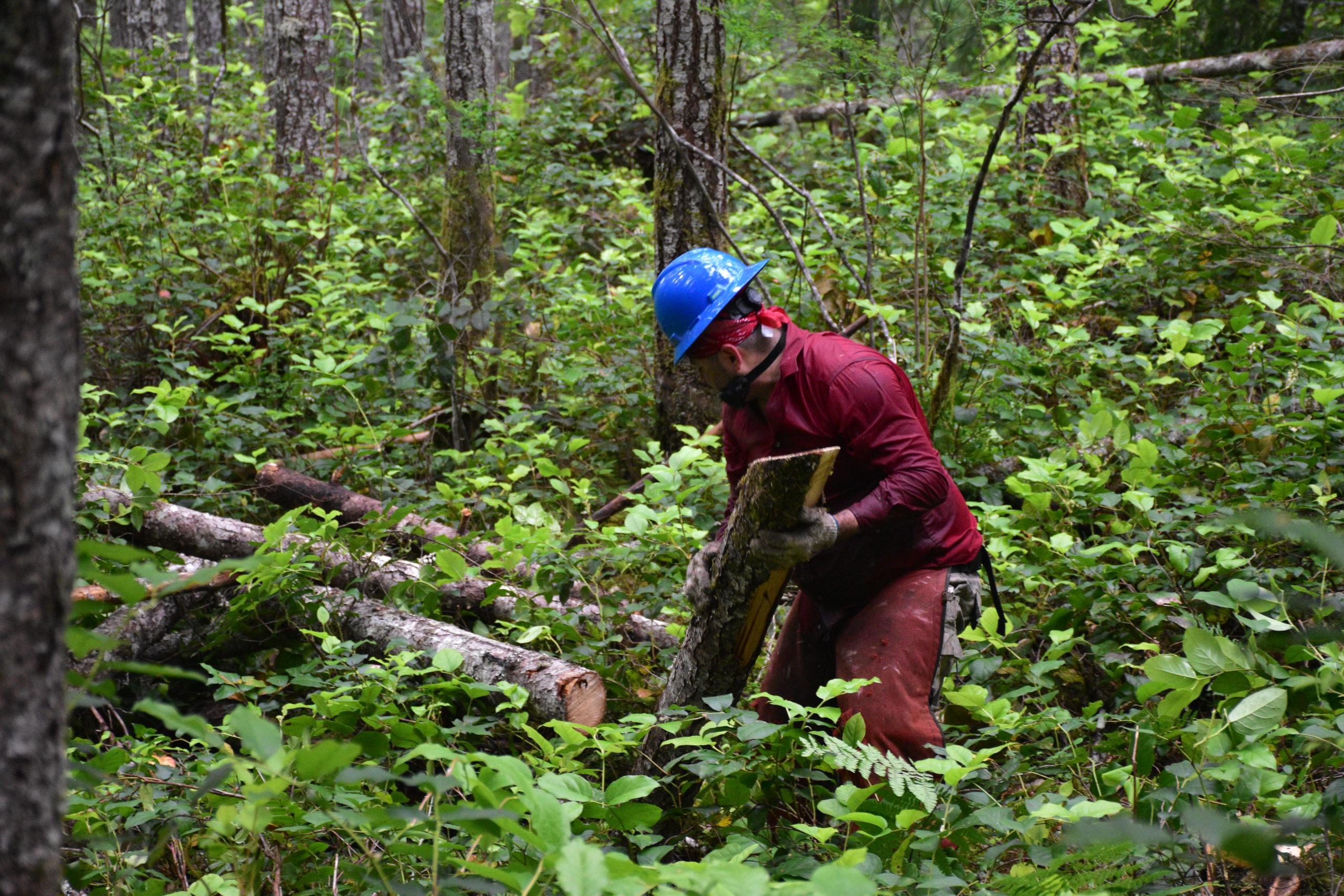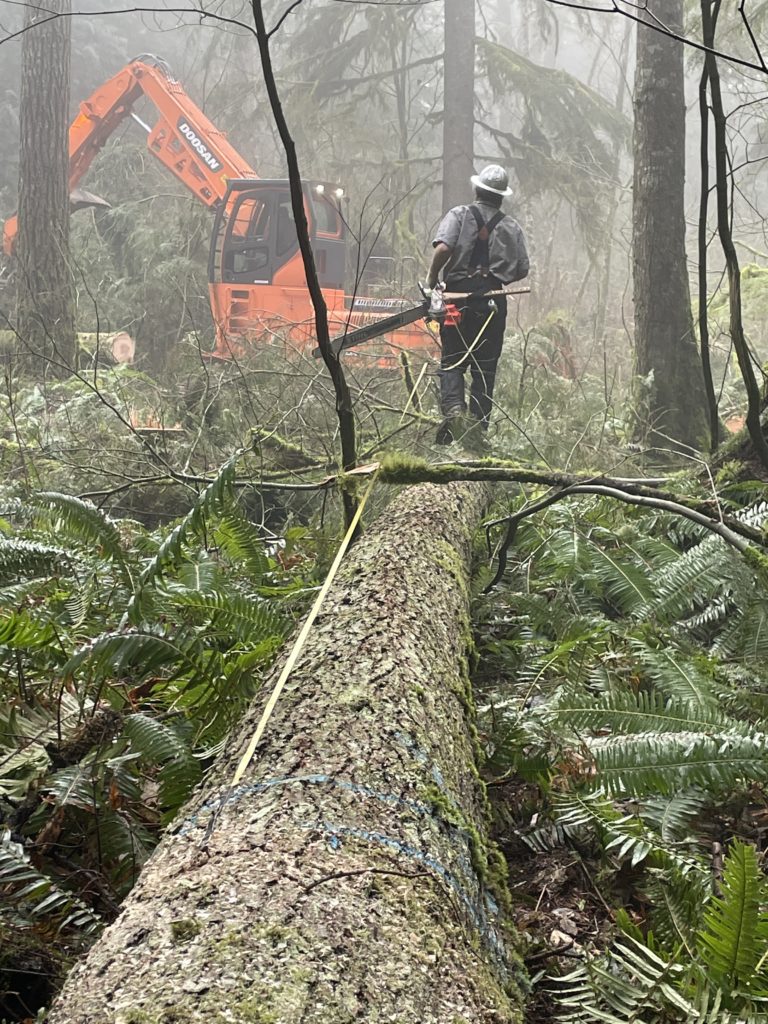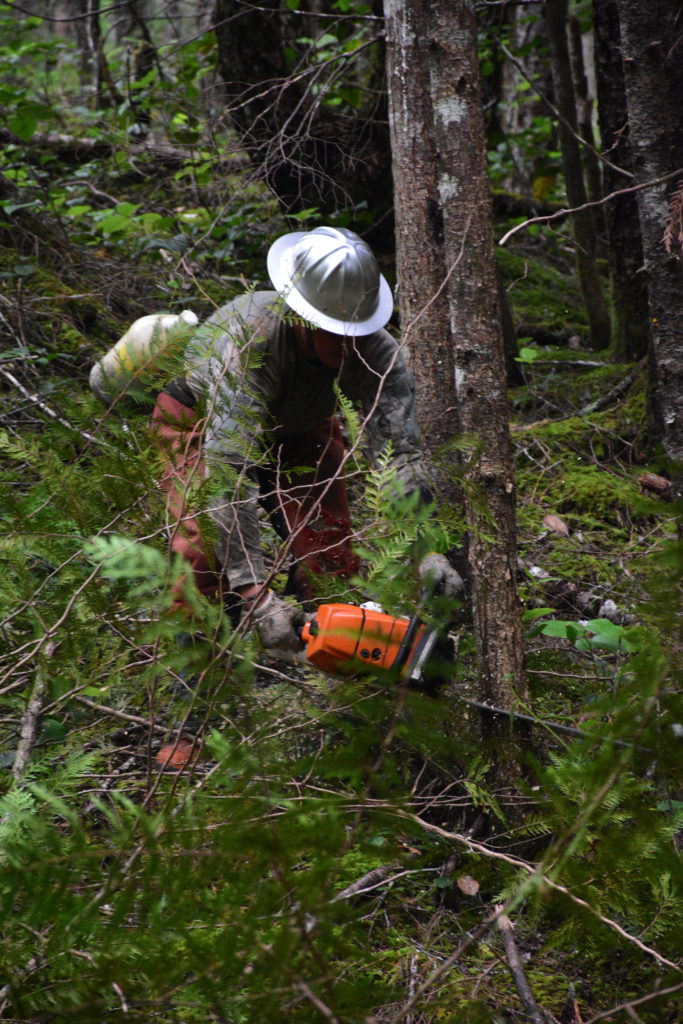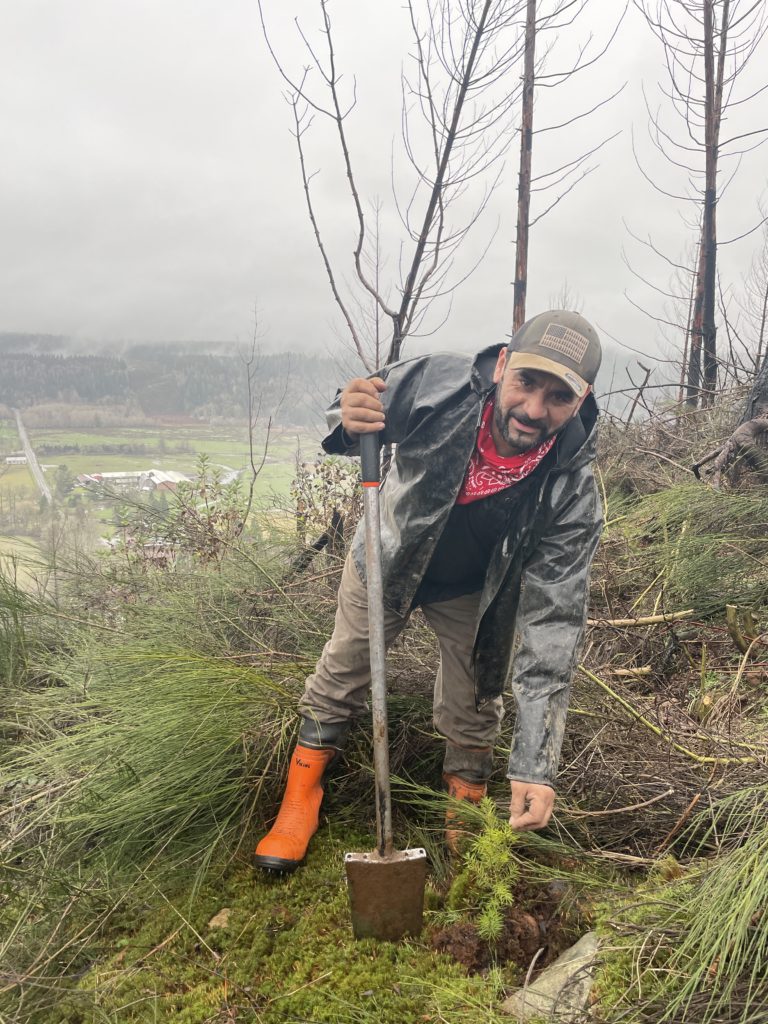Active Management and Small Landowners: It’s in the Intention

By Jaal Mann and Rowan Braybrook. This article was originally published in the Winter 2023 issue of Western Forester, which focused on exploring what active management of forests means. You can read the full issue here.
A prescribed burn to maintain open prairie. An individual western redcedar selected to make bentwood boxes or a dugout canoe. A clearing in the woods with the logs used on-site to build a cabin. Freshly planted seedlings sourced from more southern seed zones to increase the forest’s climate resilience. These are all examples of active forest management, a constantly evolving approach that has been practiced in the Pacific Northwest for thousands of years.
While active management is sometimes used as a synonym for modern industrial management that optimizes timber revenue, the reality is that its goals, and the techniques used to achieve them, can be as varied as the owners of Pacific Northwest forestland.
As foresters, we have a tendency to look at a forest and immediately start thinking about merchantability, log quality, and potential markets. While these things are important, they’re not what many small landowners first see when they look at their woods. At Northwest Natural Resource Group (NNRG), our clients own forestland for a wide variety of reasons–including conservation, habitat, recreation, aesthetics, and timber revenue.
Many of the landowners we work with are new to active management and may have owned their forestland for decades without undertaking any projects larger than clearing a trail or cutting up a fallen tree across their driveway for firewood. Our job, the way we see it, is to show landowners that they can manage their forest actively to enhance all of the unique values they see in their forest, without having to pick one value at the expense of others.
Active management on the ground
Active management doesn’t refer to a single prescription, but instead requires a plan that details the landowner’s intentions to play a regular role in the development of their forest to meet their goals, whatever they may be. If a landowner’s goal is to increase wildlife habitat, thinning out small trees and creating habitat piles and constructed logs would be a type of active management to enhance habitat. If their target is to put their stands on the path to becoming an old-growth forest, active management might mean several commercial thinnings to eventually thin the overstory to a low enough density where understory regeneration can take off and build a multi-story canopy.
One common goal we see among small landowners is to grow bigger trees by restoring an overgrown stand or former plantation. But growing big trees takes time! Especially on a small property, there might not be something to do every year. In the case of a landowner looking to grow an old-growth forest, after their first couple of thinnings they might need to wait decades for the forest to continue developing. Active management in this case means having a plan and intending to follow it when the time comes. These long periods of waiting are still active, as they include regular monitoring and possible plan adjustments in response to changing conditions, such as disease outbreaks.
Many landowners, especially conservation-first organizations like land trusts, have historically defaulted to passive management out of fear that active management might mean that they would have to clear cut their trees and that they would sacrifice the “natural” state of their forest. However, many of those landowners are now realizing that their second- and third-growth forests are not in their diverse original state, and through active management they can more quickly and reliably enhance or develop the wildlife and habitat attributes they would like to see on their properties.
NNRG has been increasingly writing this active approach into management plans for small landowners throughout the Pacific Northwest, and more land trusts have started including allowances for active management in conservation easements they hold for properties throughout the region.
The practice of active management
They say the best fertilizer is the farmer’s shadow and that holds true in forestry as much as in farming. This is an advantage that small forest landowners have over their larger neighbors: increased monitoring of the property through proximity and care. A good plan that emphasizes active management creates an outline of the next few decades of management, but the actual decisions and activities should always be driven by the conditions in the forest, which might change unexpectedly. Anyone can learn to monitor their forest themselves, to be on the lookout for disease, crowding, trespass, and any number of other issues that can happen on forestland.
Foresters can inspire this change in mindset for small landowners to become more active managers of their properties. We believe all foresters should see themselves as educators, to demystify forest management and allow landowners to become engaged in the management of their own property. Foresters who are planning management activities with small landowners should ensure they’re putting landowner intentions first, rather than defaulting to a market mindset. Creating this collaborative relationship can turn passive landowners into active managers.
Active management, like all forestry, can take different forms on the landscape, but the key is that the activities that are being carried out support the ultimate long-term goals of the landowner. With their forester acting as a partner and supporter, small landowners have the potential to redefine what active management looks like in the Pacific Northwest.




Leave a Reply